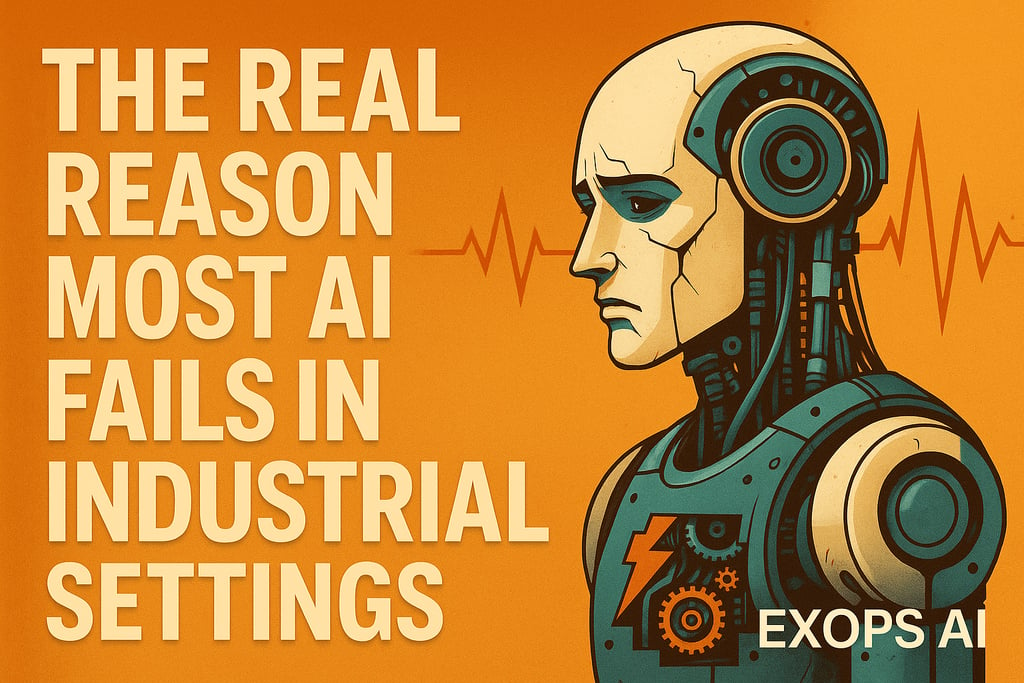
The Real Reason Most AI Fail in Industrial Settings
Most AI tools fail in real-world operations, reason being they weren’t built for structured, high-stakes tasks. This post breaks down why general-purpose AI misses the mark—and what industrial teams should look for in GPT tools that actually work on the job.
USE OF GENERATIVE AI
EXOPS AI
7/28/20252 min read



AI adoption is growing across industries—but on the shop floor, in field operations, and during real-time task execution, most AI tools don’t hold up.
They’re slow. They’re vague. And often, they fail to fit the way teams actually work.
Why? Because they weren’t built for industrial logic. They were built for chatrooms, not control rooms.
The Problem: General AI in High-Stakes Work
Most commercial AI platforms are optimized for creativity, casual search, or conversation—not structured workflows.
So when teams in safety, logistics, maintenance, or operations try to apply them, they hit common roadblocks:
The AI doesn’t understand task structure
It gives general advice instead of precise steps
It mixes technical terms without clarity
It creates outputs that aren’t actionable
These aren’t just usability issues—they’re blockers to adoption.
Three Reasons GPT Tools Miss the Mark
Lack of Operational Framing
AI that doesn’t know your task flow can’t guide it.
If it doesn’t understand escalation, documentation, or output types—it won’t help under pressure.
No Input Guardrails
Most platforms let users ask anything, in any format.
But in fieldwork, inputs need structure: role, objective, equipment, and conditions.
No Output Control
A GPT can generate paragraphs of text, but field teams need:
Checklists
Step-by-step walkthroughs
Visual or tabular outputs
Exportable summaries
If the AI can’t produce that format—it creates work, not clarity.
What Successful AI in Industry Actually Looks Like
Starts with a user’s role (e.g. safety officer, shift supervisor)
Guides the task forward with relevant prompts
Keeps the response tied to operational reality
Allows structured exports (PDF, bullet lists, logic flow)
Doesn’t guess—asks for more detail if input is unclear
Example:
Prompt: “Draft a 5-line response plan for unplanned shutdown during weekend shift.”
The GPT should:
Ask for the system affected
Confirm shift coverage
Generate response logic in brief, shareable format
What to Look for Before You Adopt AI
If you’re evaluating tools for your plant, facility, or field operation, ask:
Can it process real-world operational prompts, or just casual chat?
Can it generate structured, exportable output?
Does it have use-case guardrails, or is it open-ended?
Can I trust it with repeatable, role-specific tasks?
If the answer to these is no—you may need an AI built specifically for operations, not generic exploration.
Conclusion
AI in industry doesn’t fail because teams aren’t ready. It fails because the tools weren’t designed for the pressure, structure, and accountability that real operations require.
When AI fits your workflow, it becomes an asset.
When it doesn’t, it becomes another layer of friction.
Choose the tools that match your work—not the ones that just look impressive in a demo.
Disclaimer
EXOPS AI GPTs are designed for structured, real-time decision support—not open-ended conversation. All use should be governed by site-level review, and outputs should be verified prior to use in high-risk or compliance-relevant situations.
Author: EXOPS AI L.L.C.
Connect with us: info@exopsai.io | +1 (833) 396-7724
Explore our Custom GPT Store: https://exopsai.io/artificial-intelligence-gpt-store

